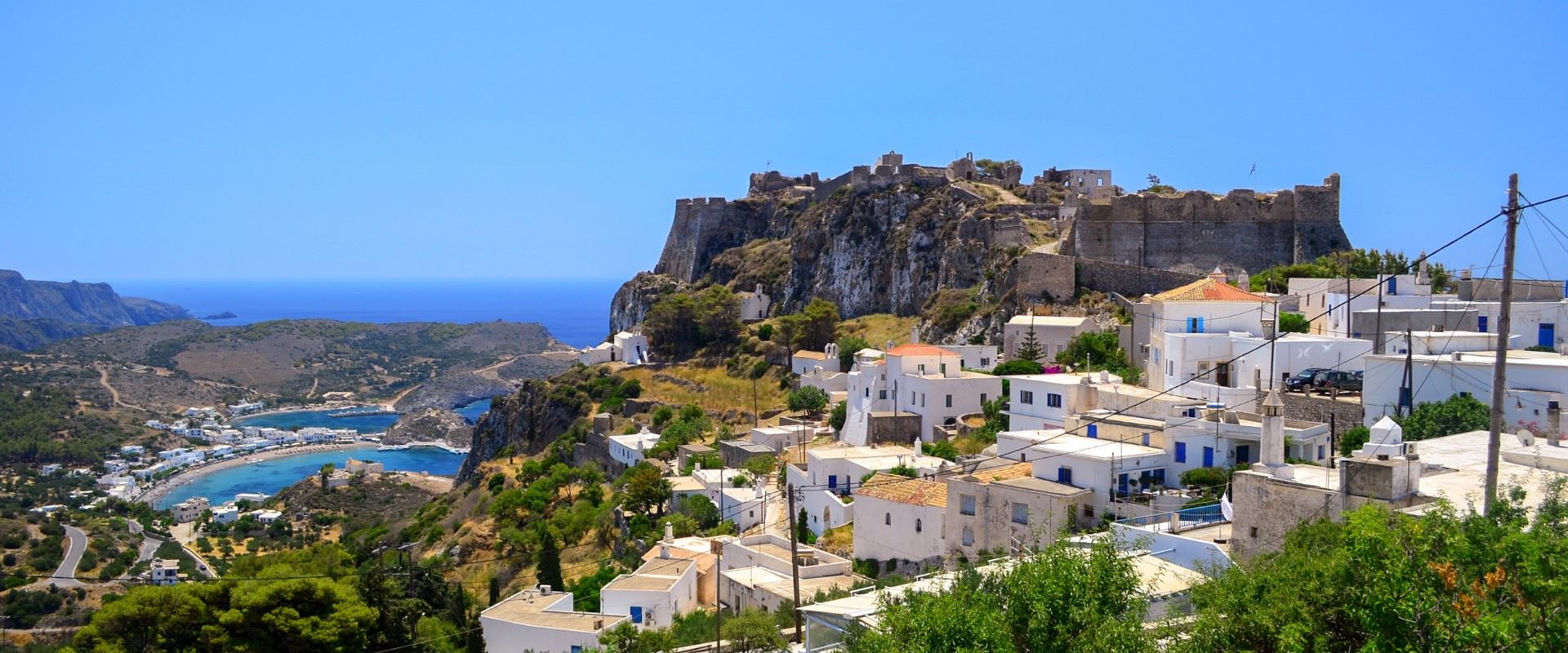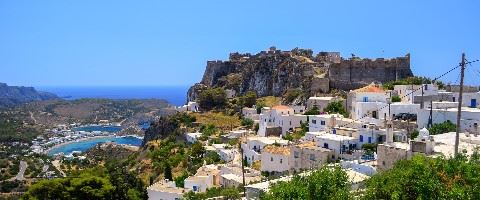For this you have to thank the hard to-reach location off the main ferry routes and the fact that the airport is too small to take large aircraft. But, thanks to improved flight schedules from Athens - from one to two small planes a day - it is now possible to reach Kythira without having to overnight.
Kythira is the 17th Greek island in terms of size (280 sq km), about the same as Kos but with a fraction of the population (c 3500) and numbers of summer visitors. It offers a varied topography hiding many villages and over 30 beaches, and enough history and interest to satisfy the most avid explorer.
Traditionally listed as belonging to the Ionian group of islands, geographically Kythira is closer to the Aegean. This is reflected in the Cycladic style of architecture - flatroofed whitewashed houses, bluedomed churches and a traditional fortified Hora (capital town) high above the sea for protection against pirate attack.
The island's strategic location at a crossroads between Crete and the mainland has meant a trading past and plenty of conquerors. Its history dates back to pre-Classical times and more recently includes roman, Byzantine, Venetian, ottoman and British rulers.
The most well known resort area is Kapsali in the south. you will understand why if you go. The village is built behind a pair of horseshoe-shaped bays - the main one of which has an excellent sandy beach - overlooked by the picture postcard whitewashed village of Hora and its Venetian castle high on the hillside above. Kapsali's beach is backed by an array of taverna restaurants, cafes and small shops and is of course busy in high season. Motor boats can be hired, there is a dive school and some seasonal excursions run by boat, including to the rocky islet of Hytra which has a fantastic sea cave where you can swim in translucent water. The area is also good for walking.
Agia Pelagia in the north east spreads around a couple of sand/shingle bays and has a very laid back Greek holiday feel. It is known for the quality of its tavernas - there are five, plus the usual cafes and shops - and the main beach is organised in parts. A high season boat trip runs (subject to weather, Kythira can be windy) to the islet of Elafonissos close to the Peloponnese, which boasts Caribbean-like white sand beaches.
Tiny Avlemonas, halfway down the east coast, is charming and picturesque. It is known for its natural swimming pool - a fjord-like rocky inlet which has the clearest of water. The village has made this a centrepiece, with landscaped gardens, paths and seating leading down to it. ladders lead into the sea, which is very sheltered and therefore a popular swimming spot when the wind blows. The village has four tavernas, a pair of cafes and a mini-market. A 10-12 minute walk south (1 km) is the well liked long sandy beach of Paleopolis. Avlemonas is really a very sweet little spot, ideal for total relaxation in a small village atmosphere.
Kythira's interior hides a gently rural landscape and over 50 traditional villages. The island holds great appeal for walkers (see tab above): there are monasteries, hundreds of small churches, ruined castles and villages, springs, waterfalls and caves with stalagmites to discover, not to mention some fabulous beaches such as striking Kaladi or the white sands of Diakofti. To make the most of Kythira, car hire is recommended as there is no bus service, although taxis are available.
A short tourist guide on the island of Kythira can be downloaded here. Information on the island's spectacular beaches can be found here.









